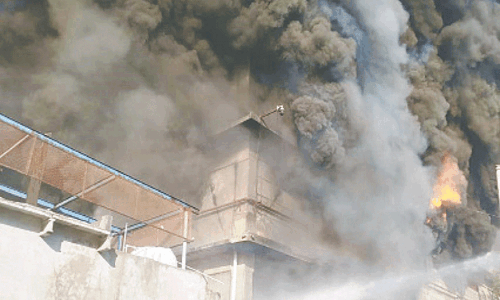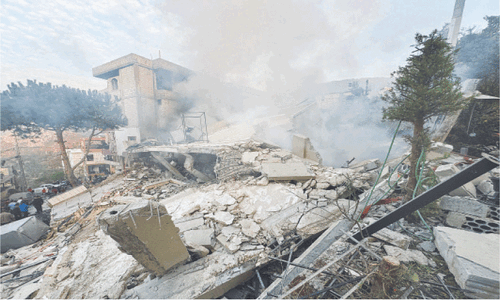TO say that the 2022 monsoon season has been exceptionally challenging for Pakistan would be an understatement. The relentless wet weather has pummelled the country, wreaking havoc on infrastructure in rural areas as well as the cities. A statement from the minister for climate change a few weeks ago said that the 30-year average for rainfall in Sindh and Balochistan had been broken. With the latest weather system unleashing rainfall in both the provinces, another record may well be smashed. According to NDMA figures, over 300 people have died in rain-related incidents, with Balochistan reporting the highest deaths. Destruction of property has also been considerable, as around 9,000 houses have partially or completely been damaged. Sindh’s urban areas — still reeling from earlier rain spells — were again pounded by heavy precipitation that started early Sunday morning and continued till Monday. The high volume of rainfall has resulted in familiar misery: flooded roads, deaths due to electrocution, electricity breakdowns and the paralysis of normal life. So extensive were the problems caused by heavy rainfall that the Sindh government declared a holiday in Karachi and Hyderabad on Monday.
With extreme weather events likely to become the norm due to climate change, a contingency plan is essential to save lives and minimise damage to property and infrastructure. While major drains were cleaned in Karachi after the uproar that was raised following the 2020 monsoon disaster, clearly the problem requires a deeper analysis to arrive at workable solutions. For rural areas, early warning systems should be in place that can enable swift evacuation of vulnerable populations in case of flash floods or hill torrents. In the cities, where drainage systems have collapsed and the concrete jungle has choked natural rainwater run-off channels, a progressive plan of action needs to be implemented to prevent urban flooding. Several suggestions are in the field, including those offered by the multinational C40 Cities Climate Leadership Group, of which Karachi is a member. These include creating flood maps; flood modelling; creating spaces that can store rainwater; replacing concrete with permeable surfaces and improving green cover. Bangkok, for example, has created a park that can store millions of gallons of water. Many of these interventions don’t require massive funding. However, what they do need is a solid commitment from all tiers of government to ensure implementation. If Pakistan is to progressively deal with the consistent threat of heavy rainfall, planning and implementation of such steps is essential.
Published in Dawn, July 26th, 2022































